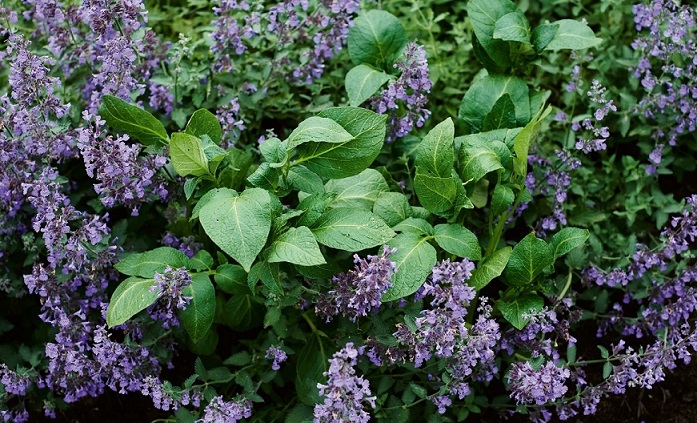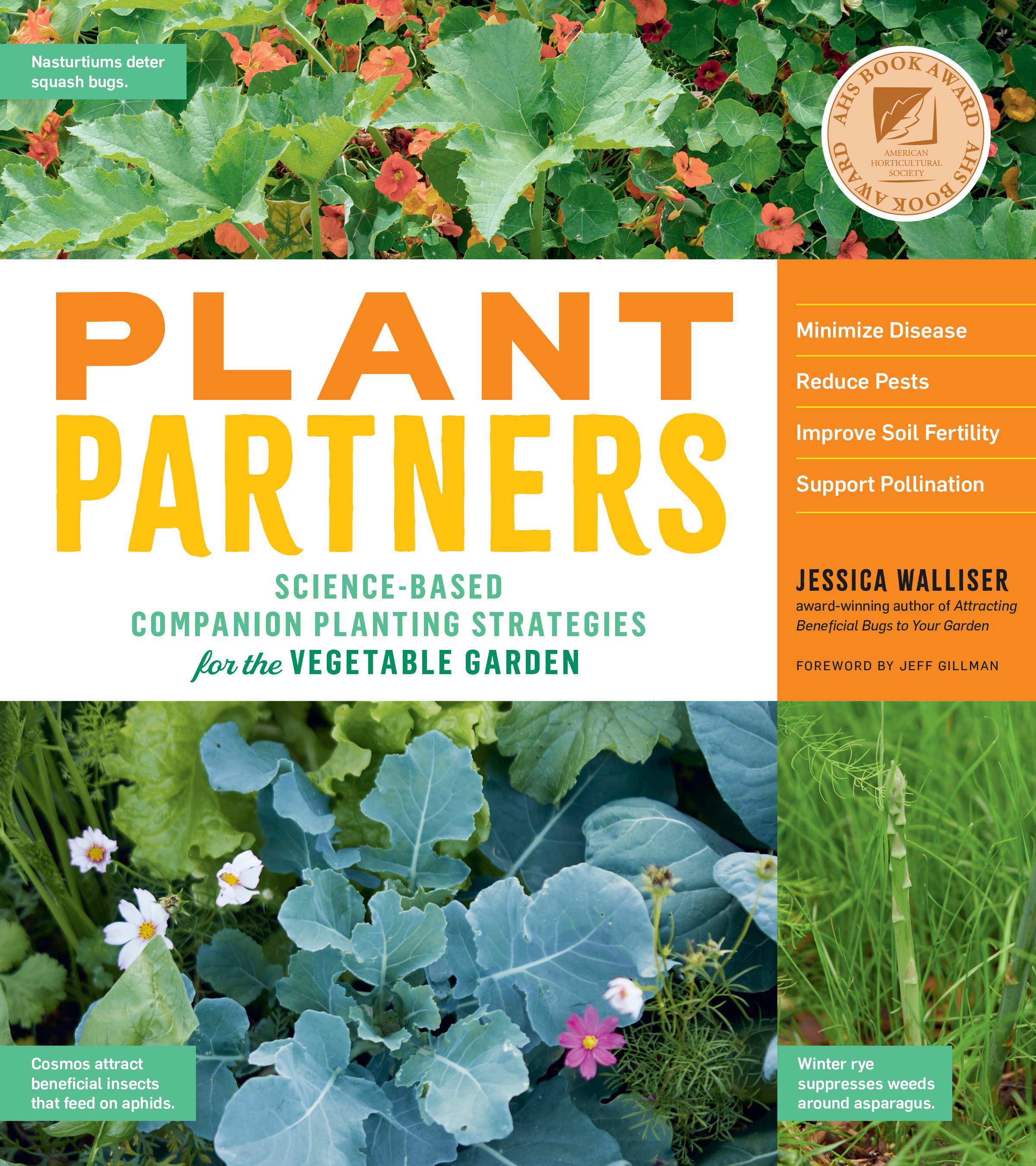"Plant Partners" looks at beneficial relationships above and below garden soil
 Tuesday, March 1, 2022 at 07:46PM
Tuesday, March 1, 2022 at 07:46PM  Catmint has lovley flowers and deters beetle-feasting on its potato patch neighbors. Angelo Merendino photo
Catmint has lovley flowers and deters beetle-feasting on its potato patch neighbors. Angelo Merendino photo "Plant Partners" by Jessica WalliserIf you hope to grow tomatoes, peppers, zucchini or eggplant this year, consider planting the bed beforehand with a spring crop of buckwheat.
"Plant Partners" by Jessica WalliserIf you hope to grow tomatoes, peppers, zucchini or eggplant this year, consider planting the bed beforehand with a spring crop of buckwheat.
Annual buckwheat (Fagopyron esculentum) is among “cover crops” that Jessica Walliser recommends in “Plant Partners: Science-Based Companion Planting Strategies for the Vegetable Garden” (Storey Publishing, $24.95).
While cover crops are widely used by commercial growers and large farms, Walliser identifies six cover crops that are easy to grow in home gardens. Depending on their growing season, cover crops are grown to be mowed down and turned into the soil or simply killed by frost.
Before they go, however, they can benefit future crops in many ways. They might draw up nutrients from low in the soil, improve soil structure and fertility, and provide organic matter that feeds beneficial microbes while improving moisture retention. Their growth can supress weeds and create habitat for pest-eating beneficial insects. Some, such as peas and beans, can fortify the soil with nitrogen, an important macronutrient that supports green, leafy growth. Walliser variously describes these plants as green mulch, green manure or living rototillers.
Early-season plants such as lettuce, radish, peas, broccoli and cabbage will benefit if they follow oats planted in the fall. Walliser allows oat straw to remain in place as mulch after its growth is stopped by frost.
“The following spring, you can plant right through their residue,” she writes, noting that doing so also will limit weed growth. “But most important, as the debris decomposes, it adds a hearty dose of organic matter to the soil.”
 Bottle gourds grow over a bed of oats, whose dried resdue serves as green mulch. Varapron Chaisin photoWhile many volumes have been written on companion planting, Walliser looks deeper into the soil for planting partnerships based on scientific research. She says her companion plants for soil preparation and conditioning can improve soil structure and fertility, provide nitrogen and even break up heavy clay soils (a plus for Union County gardens).
Bottle gourds grow over a bed of oats, whose dried resdue serves as green mulch. Varapron Chaisin photoWhile many volumes have been written on companion planting, Walliser looks deeper into the soil for planting partnerships based on scientific research. She says her companion plants for soil preparation and conditioning can improve soil structure and fertility, provide nitrogen and even break up heavy clay soils (a plus for Union County gardens).
Walliser wants growers to realize that a garden is alive with more than its cultivated plants and the insects and animals they can see.
“It's all a big web of connections out there in the garden, and it's time we started paying attention to those connections and how they can make us better gardeners,” she writes. “Farmers and gardeners now have myriad credible studies, controlled experiments and fact-based research to rely on.”
For one thing, Walliser advises against tilling and turning the soil. “Healthy soil harbors billions of living organisms, the vast majority of which are invisible to the human eye.” Disturbing the soil can interfere with beneficial interactions between them, she says.
Mycorrhizal fungi growing in or around plant roots can connect different plants to transfer nutrients and chemical messages between them, for example.
“Not only do they transfer nutrients, these fungal hyphae help build good soil structure by 'gluing' soil particles together or forming bridges between them, and by breaking down organic matter and releasing nutrients.”
Considering that “running a rototiller over a garden bed pulverizes this delicate web of life within the soil,” she advises leaving the soil intact and simply adding an inch or two of mulch such as chopped leaves or aged compost.
The book is an illuminating 206-page volume that offers a fascinating look into biodiversity and how supporting it will benefit not only individual gardens but the larger ecosystem. Suggested plant partners are organized in mission-based chapters, including soil preparation, attracting pollinators and beneficial insects as well as managing weeds and diseases. Included are necessary precautions such as how to manage plants that have potential to become invasive or to grow more quickly, robbing other plants of nutrients.
Walliser discusses using “trap plants” that draw insect pests away from favored garden plants, and mixed plantings that make it more difficult for them to find specimens they most enjoy. She sheds brighter light on the life of plants, which are “required to grow with limited resources, compete with each other, survive attacks from various herbivors and disease-causing organisms (pathogens), and reproduce -- all while staying in a single spot their entire lives."
Walliser notes: "Plants have evolved an incredible number of ways to protect themselves in spite of their inability to flee danger.”

Reader Comments